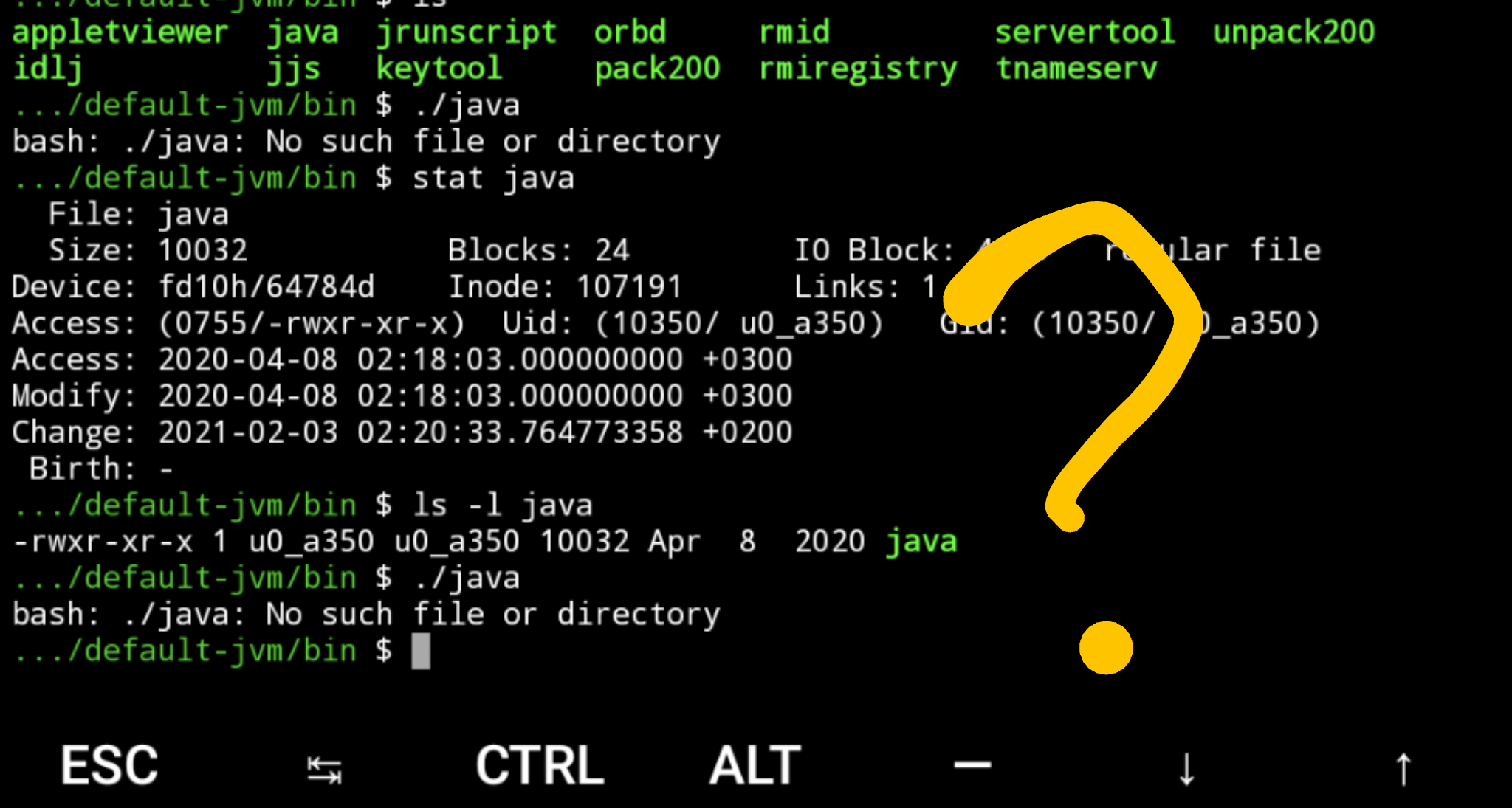Differences from Linux: Difference between revisions
| Line 22: | Line 22: | ||
== Termux uses Bionic libc == | == Termux uses Bionic libc == | ||
[[File:Linux executable dynlinker issue.png|thumb|Shell could seem to be stupid saying that file does not exist but you know it exists. | [[File:Linux executable dynlinker issue.png|thumb|Shell could seem to be stupid saying that file does not exist but you know it exists. However in this case shell is actually right. The dynamic linker absent at expected path. Use strace to know what's going on.]] | ||
To have the best compatibility with Android OS and to remove the need to maintain custom toolchains we compile all our packages with the Android NDK. The resulting binaries are linked against the Bionic libc (files libc.so, libm.so, libdl.so from /system/lib or /system/lib64). | To have the best compatibility with Android OS and to remove the need to maintain custom toolchains we compile all our packages with the Android NDK. The resulting binaries are linked against the Bionic libc (files libc.so, libm.so, libdl.so from /system/lib or /system/lib64). | ||
Revision as of 19:27, 17 August 2021
The environment setup in Termux is similar to that of a modern Linux distribution. However, running on Android implies several important differences.
Termux is not FHS compliant
This is why Termux does not use official Debian or Ubuntu packages for its environment.
Termux does not follow Filesystem Hierarchy Standard unlike majority of Linux distributions. You cannot find directories like /bin, /etc, /usr, /tmp and others at the usual locations. Thus, all programs must be patched and recompiled to meet requirements of the Termux environment otherwise they will not be able to find their configuration files or other data.
You may have a problem executing scripts that have standard shebangs (e.g. #!/bin/sh). Use the termux-fix-shebang script to modify these files before executing. Recent versions of Termux provide a special package (termux-exec) which allows usage of standard she-bangs.
Most packages have shared library dependencies which are installed to $PREFIX/lib. On devices before Android 7, Termux exports the special variable $LD_LIBRARY_PATH which tells the linker where to find shared library files. On Android 7 or higher, the DT_RUNPATH ELF header attribute is used instead of LD_LIBRARY_PATH.
If you still need a classical Linux file system layout for some reason, you may try to use termux-chroot from package 'proot':
$ pkg install proot $ termux-chroot $ ls /usr bin doc etc include lib libexec share tmp var
The termux-chroot utility may be very helpful if you use custom software that requires standard paths like /tmp, /etc, /usr to be available.
Termux uses Bionic libc

To have the best compatibility with Android OS and to remove the need to maintain custom toolchains we compile all our packages with the Android NDK. The resulting binaries are linked against the Bionic libc (files libc.so, libm.so, libdl.so from /system/lib or /system/lib64).
Use of the libc provided by Android and FHS incompatibility make it impossible to execute native packages copied from Linux distributions:
- Dynamically linked programs will not run because the linker is expected in a nonexistent location (/lib) and libc ABI does not match.
- Statically linked programs (only networking ones) will not be able to resolve DNS names. GNU libc normally doesn't allow static linking with resolver. Also, the file /etc/resolv.conf does not exist on Android.
- On non-rooted Android 8 or newer, statically linked programs will not run due to issues with seccomp filter.
However, these restrictions can be bypassed by setting up a Linux distribution rootfs with PRoot.
Root file system is stored as ordinary application data
The root file system and user home directory are located in a private application data directory which lives on the /data partition. Paths to these directories are exposed as $PREFIX and $HOME respectively.
You cannot move $PREFIX to another location because all programs expect that $PREFIX will not be changed. Additionally, you cannot have binaries, symlinks and other files from $PREFIX on sdcard because that file system does not support unix permissions, symlinks, sockets, etc...
Important: if you uninstall the Termux application or wipe its data, directories $PREFIX and $HOME will be wiped too. Before doing this, make sure that all important data is backed up.
Termux is single-user
Android applications are sandboxed and have their own Linux user id and SELinux label. Termux is no exception and everything within Termux is executed with the same user id as the Termux application itself. The username may look like u0_a231 and cannot be changed as it is derived from the user id by Bionic libc.
All our packages (except root-only ones) are patched to drop any multiuser, setuid/setgid and other similar functionality. We also changed default ports for server packages: ftpd, httpd and sshd have their default ports set to 8021, 8080 and 8022 respectively.
You have free read-write access to all application components including $PREFIX. Be careful since it is very easy to break things by accidentally deleting or overwriting files in $PREFIX.